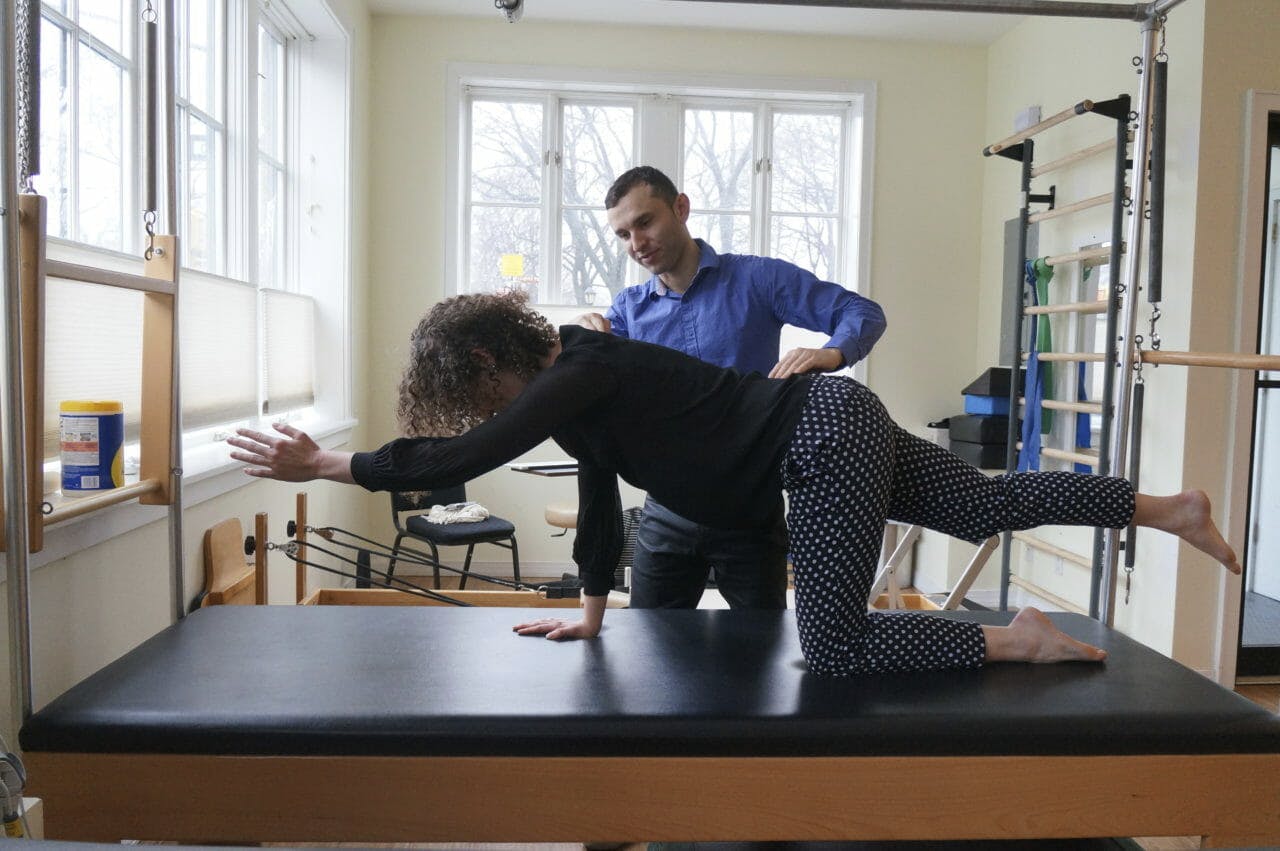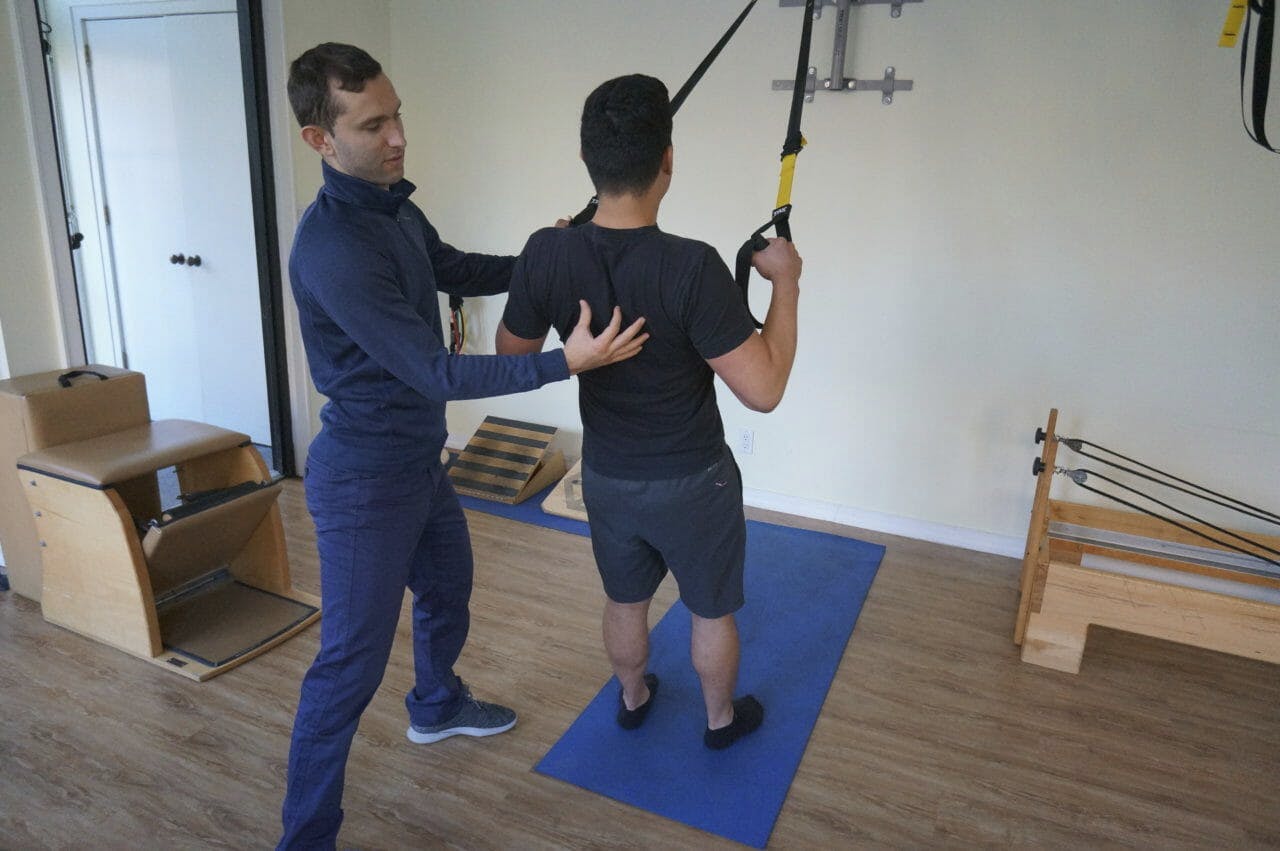By Boris Gilzon, PT, DPT, OCS, CHT
The Effectiveness of Spinal Stabilization Exercises for Back & Neck Pain
There is no standard approach treating chronic lower back and neck pain. Although this may be unfortunate for many patients to hear, the good news is that there are many conservative methods to alleviate pain.
While conditions like degenerative disk disease, spondylolesthesis, lumbar and cervical radiculopathy are rarely cured completely by conservative measures alone, physical therapy does offer a fair amount of pain relief in the long run.
By utilizing spine stabilization exercises, our physical therapists are able to help patients reduce back and neck pain. This is an active form of treatment requiring the patient to perform exercises to strengthen the muscles and improve the stability of the spine.

Patients suffering from chronic spinal pain should be leery of physical therapists who mainly offer passive modalities. Examples of passive modalities include heat, electrical stimulation, and massage. Patients should be aware that passive therapeutic modalities do not have sufficient evidence to support their use in chronic spinal conditions.
Spinal stabilization exercises offer the empowerment of the patient and have plenty of research and evidence to support their effectiveness.

Extensive benefits in treating the spine of those who suffer from lower back pain have been discussed extensively in medical literature. Physical Therapists specializing in the spinal disorders are trained in recognizing the factors that affect spinal stability.

Components Affecting Spinal Stability
The concept of spinal stability is relatively new with research beginning during the 1970’s.
There are three components that affect spinal stability.
The first component is the passive spinal element: the bone and ligamentous structures. Studies of the cadaver spine in which the bones and ligaments are intact but the muscles were removed showed to buckle under about 20 pounds.

Originally sourced from: https://musculoskeletalkey.com/anatomy-of-the-thorax-and-abdomen/
The second component of spinal stability are the muscles that surround the spine. The muscular component provides a necessary ‘stiffening” of the spinal segment. In a healthy spine, a very modest level of muscular activity can create a sufficiently stable joint. In a degenerative disk disease, for example, there is more demand on the surrounding musculature. More strength and endurance reserve is needed to overcome an injury and pain.

The third component of spinal stability are the neural elements: the central nervous system and peripheral nerves. They are akin to an orchestra conductor, coordinating the performance of various muscles, making sure they are firing at the right time, at the right amount of force.

Multiple studies have shown patients with lower back pain make a “repositioning error” in which their spine would resume to its original position causing pain after performing a certain movement more than patients with a healthy, stabilized spine.
In physical therapy language, we call it a poor postural control.
Specific physical therapy exercises and treatment has shown effectiveness in treating chronic spinal pain.
Lumbar stabilization exercises improve muscular function which can, in turn, compensate for the structural damage to the spinal segment. A thorough dynamic assessment of the spine helps identify postural deficits.
A thoughtful exercise program is designed for each individual by the physical therapist based on their initial testing and evaluation. The most tangible benefit of a lumbar stabilization is that it gives a patient the tools to control their pain.
Interventional Pain Management
Going beyond the scope of physical therapy, interventional pain management is another passive option for chronic spinal pain. This approach serves as a temporary source of relief for patients dealing with low or medium levels of lower back pain. These techniques include performing procedures directly at the level of your dysfunction.
A pain management physician gains access to the areas causing lower back or neck pain by penetrating the surface of the skin. There is a plethora of interventional pain management options for the diagnosis and treatment of the spinal pain.
Epidural steroids are the most common example of the interventional spine management. However, the accuracy and effectiveness of interventional methods in managing lower back pain are not always clear.
In the comprehensive review article published in Pain Physician, 2013 Apr:16, the authors conducted a systematic review of literature in order to collect evidence for the effectiveness of various interventional pain management techniques in the treatment of chronic spinal pain.
The author came to the conclusion that the evidence was fair to good in 52% of therapeutic interventions. The evidence for diagnostic value fared slightly better at 62%.
One significant drawback of all passive techniques is that they do not require a participation of the patient. Without an active engagement of the patient, there is a limited self-control and independence in managing their own condition.
Do you suffer from chronic neck or back pain? Our therapists can help. Schedule your appointment today.
Fill out my online form.
.png?auto=format&auto=compress&h=150)
